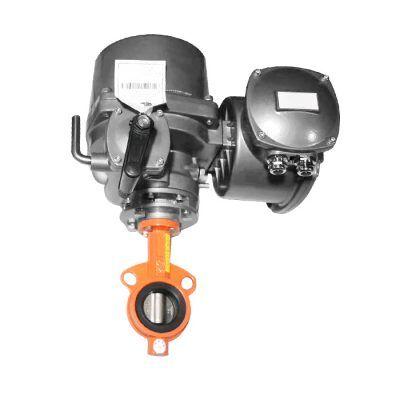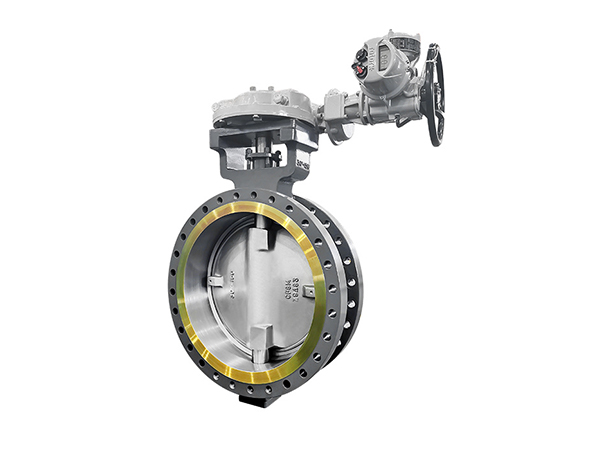In this age of automation and smart technology, the electric actuator has become a vital tool for many industries seeking to optimize their processes for improved productivity, cost-effectiveness, and safety.
Electric actuators come in different sizes and types, each designed for specific applications and requirements. Electric actuators are an essential component of modern control systems, from small and compact units for residential and commercial applications to large and robust ones for heavy-duty industrial use.
Whether you need to control the flow of fluids, gases, or even solids, electric actuators can help you achieve the desired level of accuracy and efficiency. This blog teaches you all you need to know about the working principle of an electric actuator including answers to the question ‘how does an electric linear actuator work’.
What is an Electric Actuator?
Electrical actuators are devices that convert electrical energy into a mechanical force or kinetic energy, capable of causing movements in a part of an appliance. They are typically used to control the movement of valves, pumps, gates, dampers, and other types of equipment or machinery.

Components of Electric Actuator
Electric actuators have several components that combine to convert electrical energy into mechanical motion. The specific components of an electric actuator may vary depending on the type and application of the actuator, but here are some of the common components found in most electric actuated valves by different valves manufacturers:
- Motor: This is the primary component that converts electrical energy into mechanical energy. The motor can be an AC or DC motor, and it can be configured to provide rotational or linear motion.
- Gearbox: In some electric actuators, a gearbox amplifies the output torque or changes the direction of motion. The gearbox consists of a set of gears that mesh with each other to increase or decrease the rotational speed or torque.
- Control unit: The control unit is responsible for managing the electrical signal that controls the motor. It can be a simple switch or a more complex electronic controller that can adjust the actuator’s speed, direction, and position.
- Mounting bracket: This component attaches the actuator to the mechanism or structure it is designed to move. The mounting bracket can be customized to fit specific applications.
- Actuator body: This is the outer casing that contains all the components of the electric actuator. It protects and supports the internal components and may include features such as seals or covers to protect the actuator from environmental factors.
How Does an Electric Actuator Work
To answer the question ‘how do electric linear actuators work’, we will compare it to the muscles of the human body. Muscles allow energy to be converted into motions of the arm, legs or other parts of the body where the energy is geared towards.
How do electric actuators work – The working principle of electric actuated valves is based on converting electrical energy into mechanical motion. Electrical actuators are used to control the movement of various mechanisms in a wide range of applications.
There are several types of electrical actuators, but the most common ones work based on the principles of electromagnetism or piezoelectricity.
- Electromagnetic actuators consist of a wire coil wrapped around a magnetic core. When an electrical current is passed through the coil, it creates a magnetic field that interacts with the magnetic core, causing it to move. The amount and direction of the movement depend on the polarity and strength of the magnetic field, as well as the physical characteristics of the actuator.
- Piezoelectric actuators use a material, such as quartz or ceramic, that generates an electric charge when it is subjected to mechanical stress. When a voltage is applied to the material, it causes it to expand or contract, generating mechanical motion. The amount and direction of the motion depend on the polarity and magnitude of the applied voltage, as well as the physical characteristics of the actuator.
In both types of electrical actuators, the motion generated can be used to control the movement of a mechanism. This is achieved by connecting the actuator to the mechanism using a mechanical linkage or coupling, which allows the motion of the actuator to be transmitted to the mechanism.
What Electric Actuator can Work for
Electrical actuators can work for a wide range of applications, including industrial ball valve, where precise and reliable mechanical motion control is required. Some of the common applications of electrical actuators are:
- Industrial automation: Electrical actuators are used in various industrial machines and processes, such as conveyor systems, packaging machines, and assembly lines, to control the movement of components and products.
- Aerospace and defense: Electrical actuators are used in aircraft and spacecraft systems, such as landing gear, flaps, and control surfaces, to provide precise and reliable control of motion.
- Automotive: Electrical actuators are used in various automotive systems, such as power windows, door locks, and seats, to provide comfortable and convenient control of motion.
- Robotics: Electrical actuators are used in various robotic systems, such as robot arms and grippers, to provide precise and flexible control of motion.
- Medical devices: Electrical actuators, such as surgical robots and prosthetic limbs, are used in various medical devices to provide precise and reliable motion control.
- Consumer products: Electrical actuators are used in various consumer products, such as home appliances, toys, and electronics, to provide convenient and user-friendly motion control.
How to Choose Electric Actuator for Valve
Choosing an electric actuator from an industrial valves manufacturer depends on several factors, including the type and size of the valve, the operating conditions, and the control requirements.

- Valve type and size: The electric actuator should be compatible with the type and size of the valve. For example, ball valves, butterfly valves, and globe valves may require different actuators, and the valve size may affect the actuator’s torque and speed requirements.
- Operating conditions: The operating conditions of the valve, such as the pressure, temperature, and media, should be considered when selecting an electric actuator. The actuator should be able to withstand the environmental factors and provide reliable performance under varying conditions.
- Torque and speed requirements: The valve’s torque and speed requirements depend on the valve’s size, type, and operating conditions. The electric actuator should be able to provide sufficient torque and speed to operate the valve efficiently and reliably.
- Control requirements: The control requirements of the valve, such as the type of control signal and the desired control accuracy, should be considered when selecting an electric actuator. The actuator should be compatible with the control system and be able to provide precise and responsive control of the valve.
- Mounting and installation: The electric actuator should be easy to mount and install on the valve and be compatible with the valve’s mounting configuration. The actuator should also be easy to wire and connect to the control system.
- Maintenance and support: The electric actuator should be easy to maintain and repair, and sufficient support should be available from the manufacturer or supplier. The actuator should also have a reliable warranty and after-sales support.
Dombor, Take Your Valve Business to the Next Level
Overall, it is recommended to consult with a qualified supplier to ensure that the selected actuator meets the specific needs of the valve and the application.
Dombor is a well-established China valve manufacturer that has been designing high-quality electric actuators for years. With a strong focus on innovation, quality, and customer satisfaction, Dombor has become the industry’s leading supplier of electric actuators.
At Dombor, we understand that selecting the right electric actuator for your application can be a daunting task, especially if you are not familiar with the technical aspects of the product. That’s why we offer consultation services to help you make an informed decision about the type and requirements of the electric actuator you need to purchase.
We take pride in providing high-quality products that are reliable, efficient, and durable. All our electric actuators are manufactured using the latest technology and are rigorously tested to ensure they meet the highest industry standards. We also offer excellent after-sales support to ensure our customers’ satisfaction with their purchases.
If you are looking for a reliable and trustworthy supplier of electric actuators, or you need more answers to ‘how does an electric actuator work’ look no further than Dombor. Contact us today to get a free quote and experience the quality of our products and services.









